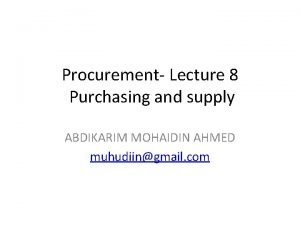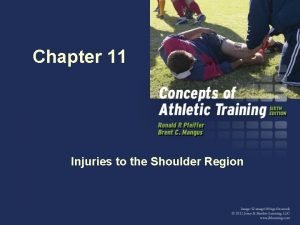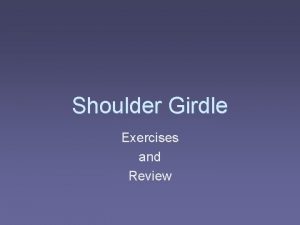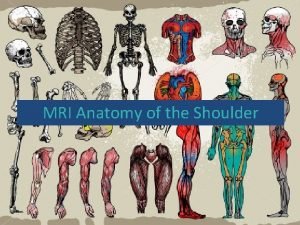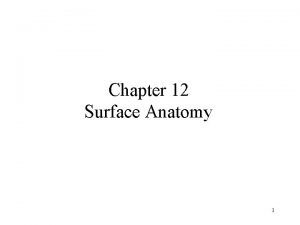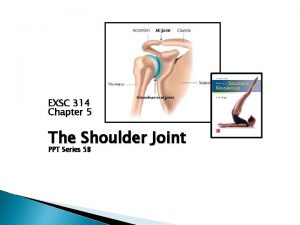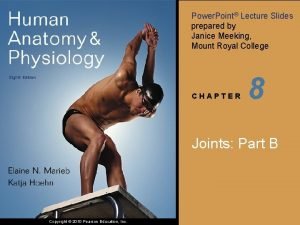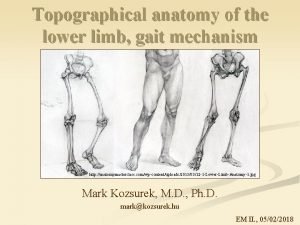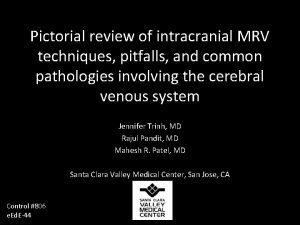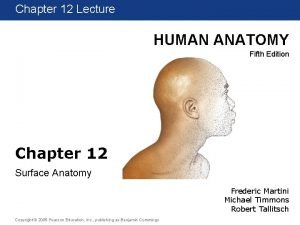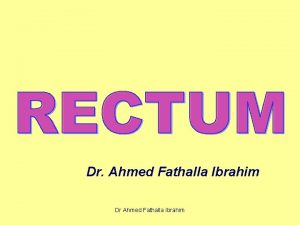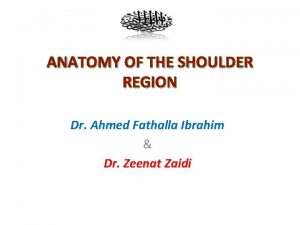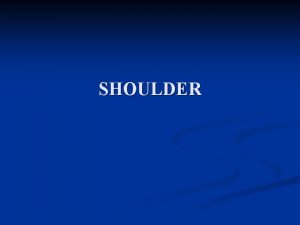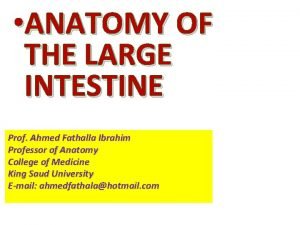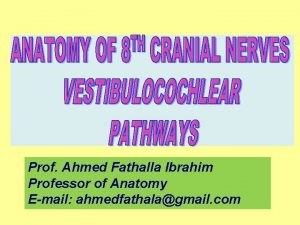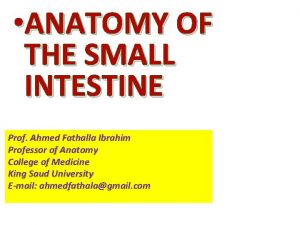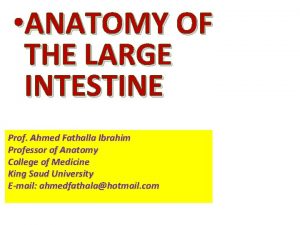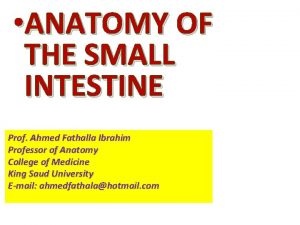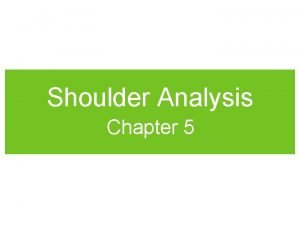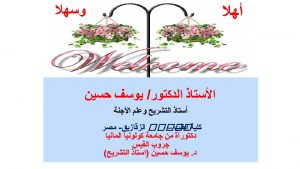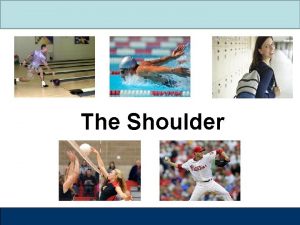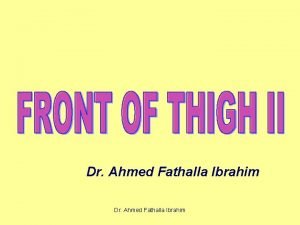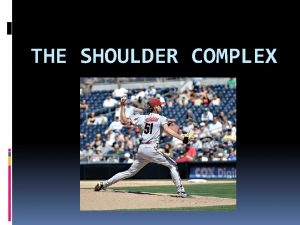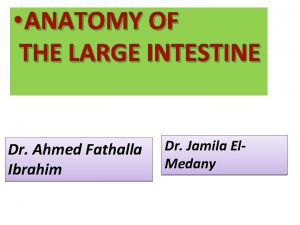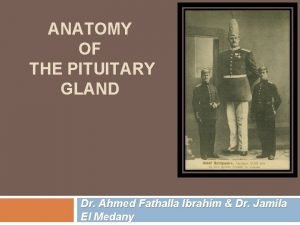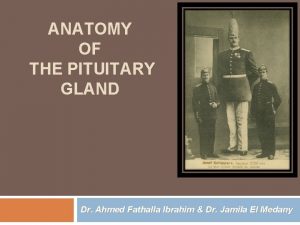ANATOMY OF THE SHOULDER REGION Prof Ahmed Fathalla





















- Slides: 21

ANATOMY OF THE SHOULDER REGION Prof. Ahmed Fathalla Ibrahim Professor of Anatomy College of Medicine King Saud University E-mail: ahmedfathala@gmail. com

OBJECTIVES At the end of the lecture, students should: § List the name of muscles of the shoulder region. § Describe the anatomy of muscles of shoulder region regarding: attachments of each of them to scapula & humerus, nerve supply and actions on shoulder joint § List the muscles forming the rotator cuff and describe the relation of each of them to the shoulder joint § Describe the anatomy of shoulder joint regarding: type, articular surfaces, stability, relations & movements.

MUSCLES OF SHOULDER REGION q They are muscles connecting scapula to humerus (move humerus through shoulder joint). 1. Deltoid. 2. Supraspinatus. 3. Infraspinatus. 4. Teres minor. 5. Teres major. 6. Subscapularis.

DELTOID q A triangular muscle that forms the contour of the shoulder q Origin: lateral 1/3 of clavicle + acromion and spine of scapula (look to insertion of trapezius). q Insertion: deltoid tuberosity of humerus. q Nerve supply: axillary nerve. q Actions: 1. Anterior fibers: flexion & medial rotation of humerus (arm, shoulder joint). 2. Middle fibers: abduction of humerus from 15° - 90 °. 3. Posterior fibers: extension & lateral rotation of humerus.

SUPRASPINATUS & INFRASPINATUS q Origin: 1. Supraspinatus: supraspinous fossa. 2. Infraspinatus: infraspinaous fossa. q Insertion: greater tuberosity of humerus. q Nerve supply: suprascapular nerve. q Action: 1. Supraspinatus: abduction of humerus from 0° - 15°. 2. Infraspinatus: lateral rotation of humerus. S I

TERES MINOR q Origin: lateral border of scapula. q Insertion: greater tuberosity of humerus. q Nerve supply: axillary nerve. q Action: lateral rotation of humerus.

TERES MAJOR q Origin: lateral border of scapula. q Insertion: bicipital groove of humerus (look to insertion of latissimus dorsi & pectoralis major). q Nerve supply: lower subscapular nerve. q Actions: extension, adduction & medial rotation of humerus (look to action of latissimus dorsi).

SUBSCAPULARIS q. Origin: subscapular fossa. q. Insertion: lesser tuberosity of humerus. q. Nerve supply: upper & lower subscapular nerves. q. Action: medial rotation of humerus.

SHOULDER JOINT q. TYPE: Synovial, multiaxial (ball & socket) q. ARTICULAR SURFACES: 1. Head of humerus 2. Glenoid cavity of scapula q. STABILITY: NOT STABLE 1. Head of humerus is 3 times larger than glenoid cavity 2. Capsule is redundant. 3. Few ligamentous support: glenoid labrum, coracohumeral 4. Main support: muscles around the joint (ROTATOR CUFF) 5. Wide range of movement

ROTATOR CUFF q. It is formed of 4 muscles: muscles supraspinatus, infraspinatus, teres minor & subscapularis (SITS). q. Muscles form a tendinous cuff around the shoulder joint covering its anterior, posterior and superior aspects. q. The cuff is deficient inferiorly and this is the site of potential weakness. q. The tone of these muscles help in stabilizing the shoulder joint. S I S T

BURSAE IN RELATION TO SHOULDER JOINT q They reduce friction between tendons, joint capsule & bone. q They are liable to be inflammed following injury of rotator cuff muscles. 1. Subscapularis bursa: between subscapularis tendon & capsule. 2. Infraspinatus bursa: between infraspinatus tendon & capsule. 3. Subacromial bursa: between deltoid, supraspinatus and capsule. 3 2 1

ROTATOR CUFF q Rotator cuff can be damaged due to trauma (during playing baseball) or disease (in older individuals). q Trauma can tear or rupture one or more tendon (s) forming the cuff. Patients with rotator injury will present with pain, shoulder instability, and limited range of motion. q Supraspinatus tendon is the most common site of rotator cuff injury.

RELATIONS OF SHOULDER JOINT Supraspinatus Subscapularis Te re sm ino r Infraspinatus Axillary nerve q ANTERIOR: subscapularis q POSTERIOR: infraspinatus, teres minor q SUPERIOR: supraspinatus q INFERIOR: axillary nerve

MOVEMENTS OF SHOULDER JOINT q. FLEXION: 1. Anterior fibers of deltoid 2. Pectoralis major 3. Coracobrachialis (muscle of arm) 4. Short head of biceps brachii (muscle of arm) q. EXTENSION: 1. Posterior fibers of deltoid 2. Latissimus dorsi 3. Teres major

MOVEMENTS OF SHOULDER JOINT q. ABDUCTION: 1. From 0° - 15°: Supraspinatus 2. From 15° - 90 °: Middle fibers of deltoid q. ADDUCTION: 1. Pectoralis major 2. Latissimus dorsi Inserted in bicipital groove 3. Teres major

MOVEMENTS OF SHOULDER JOINT q. MEDIAL ROTATION: 1. Pectoralis major 2. Latissimus dorsi Inserted in bicipital groove 3. Teres major 4. Anterior fibers of deltoid 5. Subscapularis q. LATERAL ROTATION: 1. Posterior fibers of deltoid 2. Infraspinatus 3. Teres minor

SUMMARY q. MUSCLES OF SHOULDER REGION: 1. Origin: scapula. 2. Insertion: humerus. 3. Action: move humerus (SHOULDER JOINT) 4. Nerve supply: anterior rami of spinal nerves through brachial plexus. q ROTATOR CUFF: 4 muscles in scapular region surrounds and helps in stabilization of shoulder joint (supraspinatus, infraspinatus, teres minor, subscapularis).

SUMMARY q. Shoulder joint: 1. Type: synovial, ball & socket 2. Articular surfaces: head of humerus & glenoid cavity of scapula 3. Stability: depends on rotator cuff 4. Relations: rotator cuff and axillary nerve 5. Movement: flexion, extension, abduction, adduction, medial & lateral rotation

QUESTION 1 q. Which one of the following muscles is inserted into the lesser tuberosity of the humerus? 1. Subscapularis 2. Deltoid 3. Teres major 4. Infraspinatus

QUESTION 2 q. Which one of the following muscles belong to the rotator cuff? 1. Subscapularis. 2. Deltoid. 3. Teres major. 4. Rhomboid minor.

THANK YOU
 Ahmed fathalla
Ahmed fathalla Ahmed muhudiin ahmed
Ahmed muhudiin ahmed Chapter 11 injuries to the shoulder region
Chapter 11 injuries to the shoulder region Scapula exercises bodybuilding
Scapula exercises bodybuilding Buford complex
Buford complex Shoulder surface anatomy
Shoulder surface anatomy Teres minor abduction
Teres minor abduction Gleniod labrum
Gleniod labrum Iliofemoral ligament
Iliofemoral ligament Levator scapulae origin and insertion
Levator scapulae origin and insertion Ece
Ece Nerves inguinal hernia repair
Nerves inguinal hernia repair Mr venography
Mr venography Anatomy region
Anatomy region Riolan muscle
Riolan muscle Hình ảnh bộ gõ cơ thể búng tay
Hình ảnh bộ gõ cơ thể búng tay Bổ thể
Bổ thể Tỉ lệ cơ thể trẻ em
Tỉ lệ cơ thể trẻ em Voi kéo gỗ như thế nào
Voi kéo gỗ như thế nào Glasgow thang điểm
Glasgow thang điểm Chúa sống lại
Chúa sống lại

